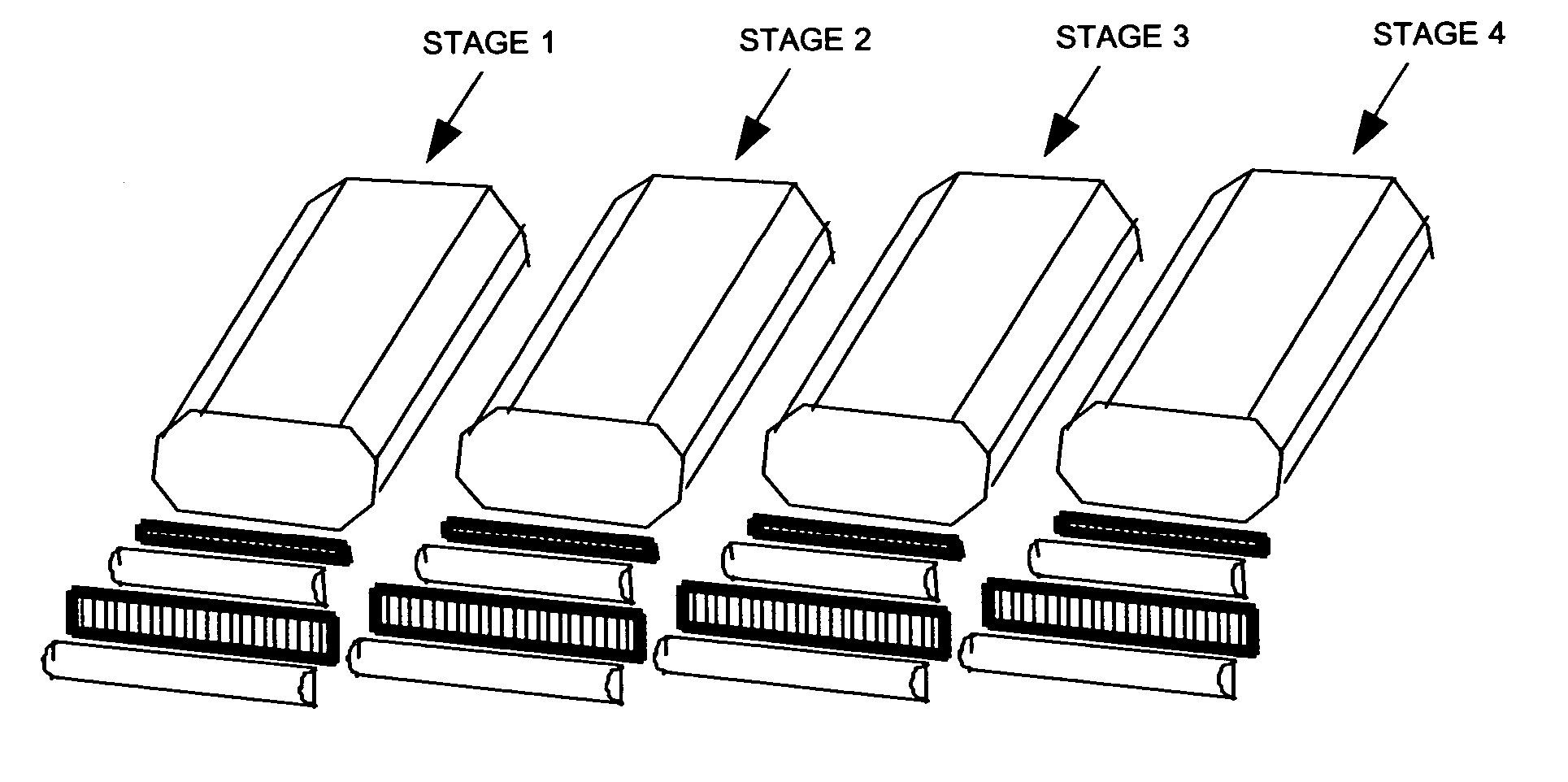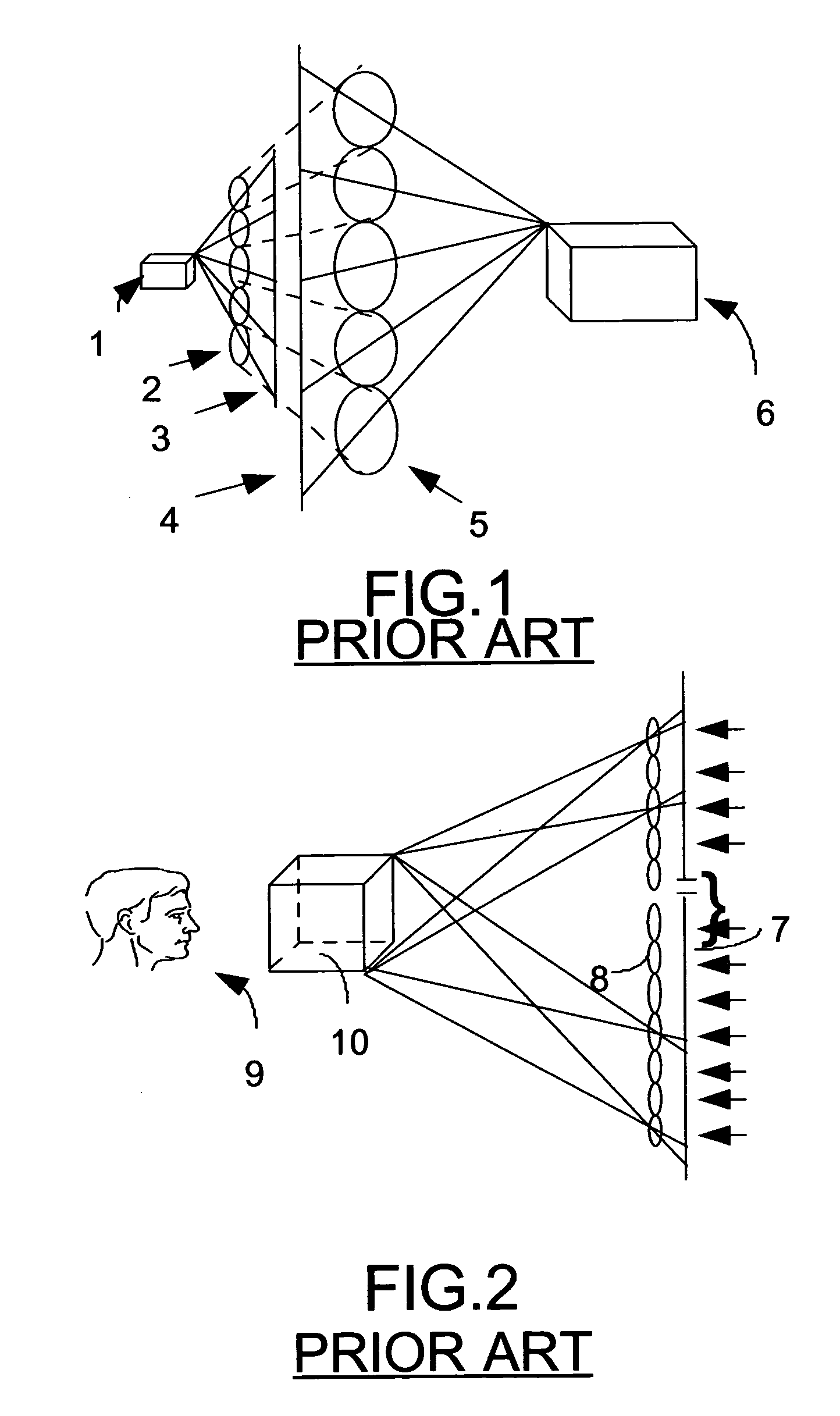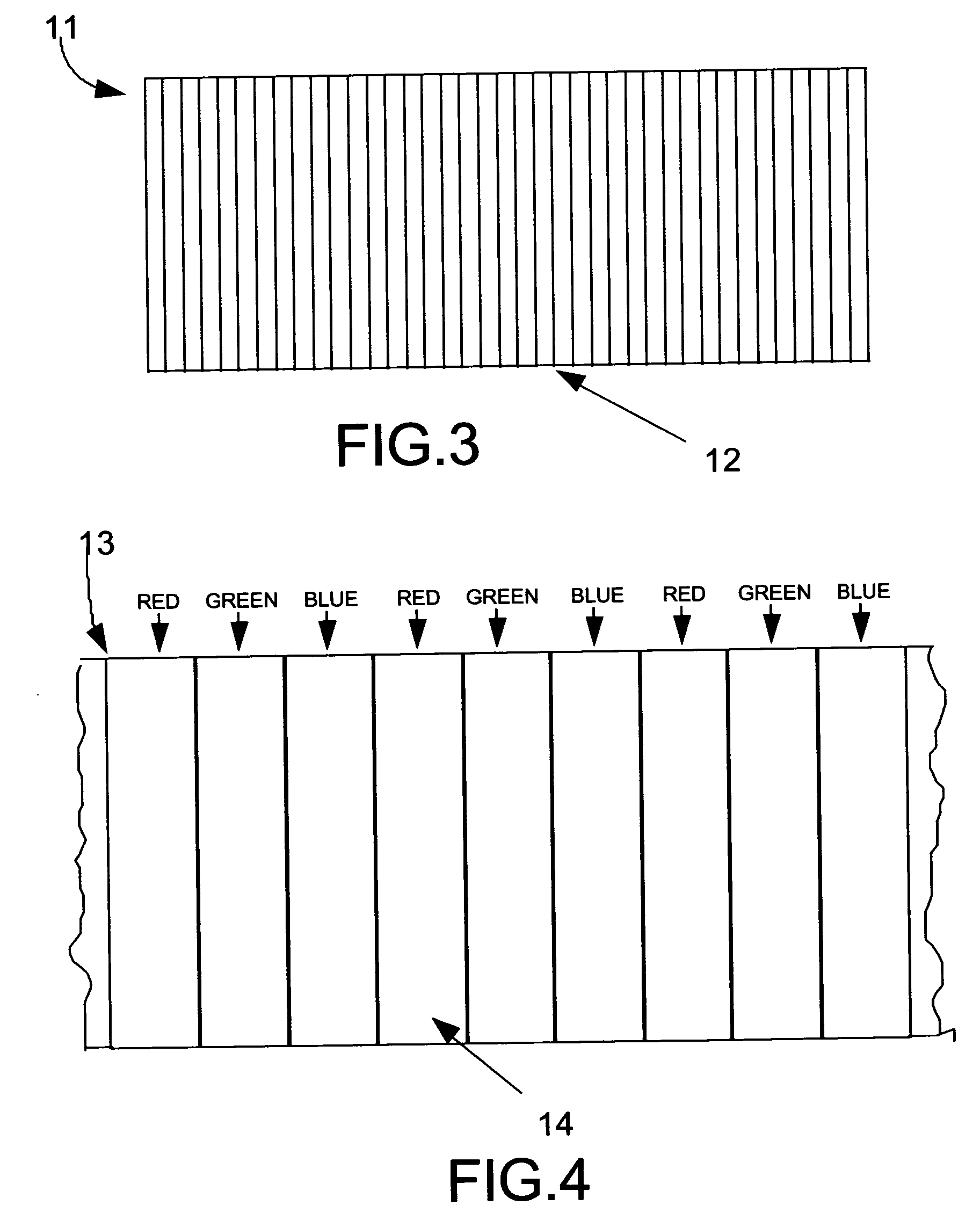System and apparatus for recording, transmitting, and projecting digital three-dimensional images
a technology of digital three-dimensional images and system and apparatus, which is applied in the direction of signal generators with optical-mechanical scanning, color television with bandwidth reduction, and television systems, etc., which can solve the problems of over-resolution capability of even this film, projector illumination demands are high, and film stabilization requirements are high
- Summary
- Abstract
- Description
- Claims
- Application Information
AI Technical Summary
Benefits of technology
Problems solved by technology
Method used
Image
Examples
third embodiment
2.4 the Camera
[0141] A third solution to the problem exists that would permit the use of a single conventional video low resolution imaging tube. This third embodiment of the camera would involve optically magnifying each elemental picture and focusing the magnified image onto the surface of the imaging tube. This method has the advantage of providing high resolution pictures, but has the disadvantage that much higher data transfer rates are required. For example, if normal film moves at 25 fps and there are 1,800 elemental pictures, then information would have to be transferred at the rate of 45,000 fps. Video camera electronics that provide such a high transfer rate are not commercially available. Furthermore, the electron beam scan rate of the video imaging tube is not that high. Multiple video imaging tubes can be used to alleviate the scan rate problem. In the extreme case, the number of video imaging tubes can be equal to the number of elemental pictures. However, a camera of ...
fourth embodiment
2.5 the Camera
[0142] A fourth solution to the problem exists that would employ high resolution line scan image sensors rather than area scan image sensors. A line scan image sensor captures image data by scanning a single line while an area scan image sensor scans an entire image surface one line at a time. Line scan image sensors are generally used for document scanning and optical character recognition while area scan image sensors are commonly used for video applications. FIG. 9 shows a schematic of a line scan image sensor. The active element of a line scan image sensor 31 is a small rectangular area 32. Within that rectangular area are sensitized pixels that are able to capture image data. Electrode pins 33 plug the image sensor into the electronics of the device (e.g., a photocopy or a facsimile machine) where scanning is to occur. Most line scan image sensors have relatively low resolution. However, high resolution line scan image sensors are commercially available. For examp...
fifth embodiment
2.6 the Camera
[0144] As an alternative fifth embodiment, the scanning device 37 of FIG. 10 may be eliminated entirely. In that event, the sensor 38 must be moved to accept the entire image. The advantage of doing this would be the elimination of optics that can potentially distort the image. The disadvantage of this alternative is that a 25-50 cps vibration would be set up that could destabilize the camera. However, once again, techniques exist that could stabilize the camera.
2.7 General Discussion Pertaining to the First Five Camera Embodiments
[0145] The camera used in this process, whether film or video, is very large relative to current motion picture camera equipment. The size of the camera horizontally is dictated by the size requirements of the matrix lens array. The width of the array is between 1½ and 2 meters, and its height is one-half of the width. The camera housing must encompass the external optics (i.e., the horizontal cylindrical lens(es), the matrix lens array(s)...
PUM
 Login to View More
Login to View More Abstract
Description
Claims
Application Information
 Login to View More
Login to View More - Generate Ideas
- Intellectual Property
- Life Sciences
- Materials
- Tech Scout
- Unparalleled Data Quality
- Higher Quality Content
- 60% Fewer Hallucinations
Browse by: Latest US Patents, China's latest patents, Technical Efficacy Thesaurus, Application Domain, Technology Topic, Popular Technical Reports.
© 2025 PatSnap. All rights reserved.Legal|Privacy policy|Modern Slavery Act Transparency Statement|Sitemap|About US| Contact US: help@patsnap.com



